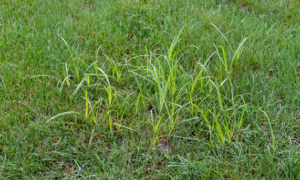Nutsedge vs Crabgrass
About Nutsedge vs Crabgrass
Understanding Yellow Nutsedge and Crabgrass: Key Differences and Management Strategies
In the battle for a pristine lawn, two common adversaries often emerge: yellow nutsedge and crabgrass. While both are unwelcome intruders, they possess distinct characteristics and growth habits that require tailored management approaches. In this guide, we delve into the differences between yellow nutsedge and crabgrass, shedding light on their respective traits, identification methods, and effective control strategies.
Yellow Nutsedge: The Stealthy Invader

Yellow nutsedge (Cyperus esculentus), often referred to as “nutgrass,” is a perennial weed that thrives in moist, poorly drained soil conditions. Despite its grass-like appearance, yellow nutsedge belongs to the sedge family, distinguishing it from true grasses like crabgrass. One of its most distinguishing features is its triangular stem, which sets it apart from the round stems of grasses.
Identifying yellow nutsedge can be challenging, especially in the early stages of growth. However, as it matures, distinctive yellow-green, grass-like leaves emerge from the base of the plant, accompanied by clusters of small, brownish seed heads. Unlike crabgrass, which tends to grow horizontally, yellow nutsedge sends up triangular stems that can reach heights of up to three feet, towering over surrounding turf.
Stephen, one of our operations mangers, shows briefly what Nutsedge looks like on a lawn last year.
Take a quick look: CLICK HERE
Crabgrass: The Prolific Invader

Crabgrass (Digitaria spp.) is an annual grass weed that thrives in warm-season climates and disturbed turf areas. Unlike yellow nutsedge, which spreads primarily through rhizomes and tubers, crabgrass reproduces prolifically through seeds, making it a formidable foe for homeowners seeking to maintain a pristine lawn.
Identifying crabgrass is relatively straightforward, thanks to its characteristic prostrate growth habit and distinctive seed heads. Crabgrass leaves are flat and broad, with a characteristic crab-like appearance, hence the name. As it matures, crabgrass produces branching seed heads that resemble fingers, containing numerous seeds capable of germinating and perpetuating the infestation.
Key Differences in Growth Habits and Control Measures
While yellow nutsedge and crabgrass share the common goal of invading and dominating turf areas, their growth habits and control measures diverge significantly:
- Root Systems: Yellow nutsedge spreads primarily through underground rhizomes and tubers, making it resilient to traditional herbicides targeting annual grasses like crabgrass. Effective control often requires a combination of cultural practices, such as improving drainage and reducing soil compaction, along with targeted herbicide applications.
- Germination Patterns: Crabgrass relies on seed germination for propagation, with seeds germinating in late spring or early summer when soil temperatures rise above a certain threshold. Pre-emergent herbicides applied before germination can effectively prevent crabgrass infestations, while post-emergent herbicides target established crabgrass plants.
- Environmental Preferences: Yellow nutsedge thrives in moist, poorly drained soil conditions, making it a common sight in areas with irrigation or drainage issues. In contrast, crabgrass favors hot, sunny conditions and often colonizes areas with sparse turf cover or soil disturbance, such as along edges and in bare patches.
